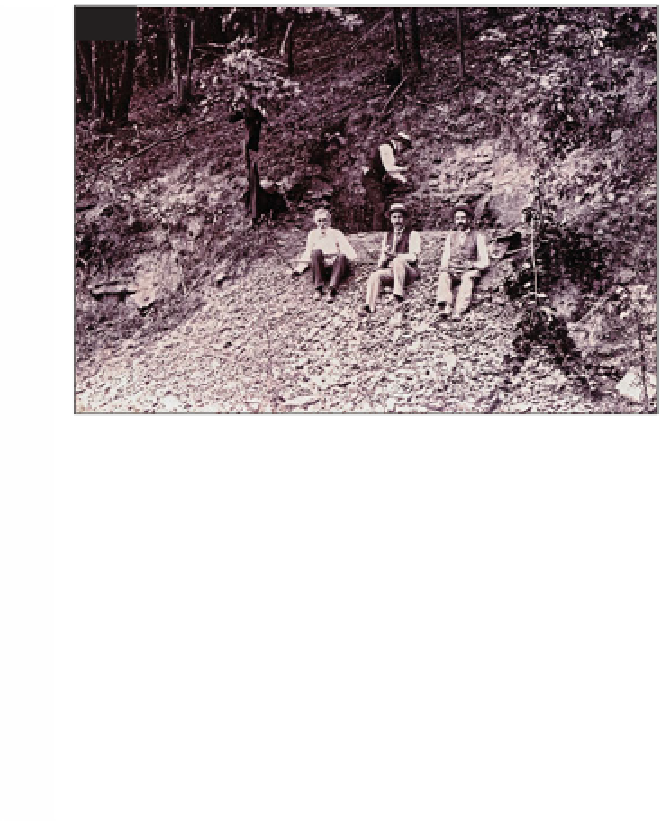Geoscience Reference
In-Depth Information
49
49 An old photograph of
Charles Beecher right at
his excavation, together
with his brother Coleman
Beecher centre, his uncle
Henry Downer left and,
collecting fossils behind,
Doc Randall YPM.
not calcified, when the animal dies or
molts its skin, the hard dorsal surface
stands a much greater chance of being
fossilized than the soft parts. Nearly all
fossil trilobites show the hard dorsal
surface only, and trilobite soft parts are
very rarely preserved. William S Valiant, a
keen amateur fossil collector from Rome,
New York, was aware of a discovery by
Charles Walcott (who later found the
Burgess Shale, Chapter 3) of trilobites
with appendages in thin sections of the
Trenton Limestone of New York (Walcott,
1876, 1879). In his searches for fossils
along Six Mile Creek at Cleveland's Glen
near Rome, New York, Valiant had found
a chip of shale with what looked
tantalizingly like a trilobite appendage on
it. Curious as to where this piece of shale
originated, and hoping to find some more
trilobites with appendages, in 1884 he
started a concerted search along the
creek. At that time, trilobite legs were
known, but scientists were perplexed that
none had shown any sign of antennae
which, by comparison with crustaceans, it
was widely believed trilobites should
possess. Valiant hoped to be the first to
find trilobites with antennae and, after
searching the creek for 8 years, in 1892 he
and his half-brother Sid Mitchell located
the bed which yielded the pyritized fossils
and there were trilobites with antennae!
Valiant wrote to several New York
paleontologists about his find, including
the New York State Geologist, James
Hall, but received no replies. Eventually,
through the help of a Rome businessman
Kingsley and Professor James F Kemp at
Columbia College, some specimens
reached Kemp's student WD Matthew who
wrote the first description of trilobites with
antennae (Matthew, 1893). Some more
specimens reached Professor Marsh at
Yale University (see Chapter 9), who
passed them to his young colleague
Charles Beecher. Walcott visited the site
and published a note on the trilobite
appendages from there (Walcott, 1894).
So how did the site become known as
Beecher's Bed? In 1893, Beecher took out
a lease on the land with the exclusive
rights to dig for fossils. In 1895, Walcott
searched the adjacent plot upstream of



Search WWH ::

Custom Search